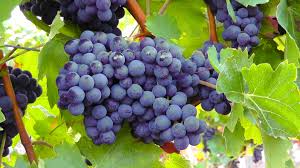Peruvian agricultural exports are a vital driver in accumulating the country’s foreign currency reserves, significantly contributing to the country’s economic stability and growth. Peru’s unique geography and climate enable the cultivation of a diverse range of high-value crops that are in demand in the global market. The primary Peruvian agricultural exports include coffee, asparagus, grapes, avocados, and blueberries, each thriving in specific regions and contributing substantial export revenue.
Coffee: High-Altitude Excellence
Coffee is one of Peru’s most significant agricultural exports, cultivated mainly in the high-altitude regions of the Andes, particularly in departments like Junín, Cajamarca, and San Martín. The Peruvian coffee industry benefits from the labor-intensive nature of coffee farming, which is well-supported by local communities skilled in traditional farming methods. In 2023, coffee exports generated around $700 million, driven by the global demand for specialty and organic coffee varieties that Peru is known for.
Asparagus: Coastal Cultivation
Asparagus is another major export crop, with Peru being one of the top asparagus exporters in the world. The coastal regions of La Libertad, Ica, and Lima provide the ideal arid conditions for asparagus cultivation. The labor force in these areas is adept at harvesting and processing asparagus for export, ensuring high standards and competitive pricing. 2023 asparagus exports brought in approximately $500 million, highlighting its importance to Peru’s agricultural export portfolio.
Grapes: Climatic Advantage
Grapes are predominantly grown in the Ica and Piura regions, where the climate is conducive to producing high-quality table grapes. The grape industry in Peru has seen rapid growth, with significant investments in modern agricultural techniques and infrastructure. The availability of skilled labor in these regions ensures that the grapes meet international quality standards. Grape exports were valued at around $1.2 billion in 2023, making them one of the top contributors to Peru’s foreign currency reserves from agricultural exports.
Avocados: Year-Round Supply
Avocados, particularly the Hass variety, have become a key export crop for Peru, with major growing areas located in the coastal regions of La Libertad, Lima, and Ica, as well as in the Andean regions of Ayacucho and Huancavelica. The Peruvian avocado industry benefits from a year-round growing season and a labor force experienced in the cultivation and packaging processes. In 2023, avocado exports reached $850 million, reflecting their increasing popularity in international markets, especially Europe and the United States.
Blueberries: Rapid Expansion
Blueberries are a relatively recent but rapidly expanding export for Peru. The coastal regions of La Libertad, Lambayeque, and Ancash offer ideal growing conditions for blueberries, with the industry benefiting from significant technological investments and efficient labor practices. Blueberry exports were valued at $1.4 billion in 2023, showcasing the crop’s rise to prominence in Peru’s agricultural export sector.
Unleash Your Growth Potential:
Attract Foreign Direct Investment (FDI)
Learn how our proven strategies bring international capital to your organization. Schedule a free consultation today to discuss your unique needs and discover how we can unlock your growth potential.
Skilled Labor: The Foundation of Success
The availability of labor to produce these crops is a critical factor in their success as export commodities. Peru’s agricultural workforce is diverse and adaptable, with many regions having a long history of farming that provides a strong foundation of traditional knowledge and skills. The Peruvian government and private sector have also invested in agricultural training programs and technological advancements to enhance productivity and quality. This investment in human capital ensures that Peru can meet the rigorous standards demanded by international markets, thereby maintaining its competitive edge.
Economic Impact: Beyond the Farms
Each major crop contributes significantly to Peru’s foreign currency reserves through direct export revenues and by fostering related industries such as packaging, transportation, and logistics. The economic impact of Peruvian agricultural exports extends beyond the farms, supporting a wide range of ancillary services and creating employment opportunities across the country.
Regional Contributions
Coffee exports, generating around $700 million, support local economies in the Andean highlands, where coffee farming is often the primary source of income for many families. With its $500 million contribution, the export of asparagus similarly drives economic activity in the coastal regions, providing jobs and supporting local businesses. With its $1.2 billion in export revenue, the grape industry has transformed regions like Ica and Piura into agricultural powerhouses, attracting domestic and foreign investment.
Avocado exports, valued at $850 million, have helped diversify the La Libertad and Ayacucho agricultural economy. In contrast, at $1.4 billion, blueberry exports have positioned Peru as a leading global supplier of this high-demand superfood. The cumulative effect of these Peruvian agricultural exports is a robust foreign currency inflow, strengthening Peru’s financial position, supporting the national budget, and allowing for greater economic resilience.
Conclusion
In conclusion, Peru’s agricultural sector is pivotal in ensuring economic security through global market integration. Cultivating high-value crops like coffee, asparagus, grapes, avocados, and blueberries contributes significantly to the country’s foreign currency reserves and is a magnet for foreign direct investment (FDI). Peru attracts investors looking to capitalize on the growing global demand for these products by showcasing its agricultural prowess and commitment to quality. The success of Peru’s agricultural exports is underpinned by a skilled and adaptable labor force supported by government initiatives and technological advancements. Furthermore, the economic impact extends beyond the farms, creating employment opportunities and fostering ancillary industries. With each major crop making substantial contributions to Peru’s foreign currency reserves, the country’s financial position is bolstered, allowing for greater economic resilience and stability. These crops’ cultivation and export drive economic growth and position Peru as a key player in the global agricultural market, attracting investment and facilitating sustainable development.
Don't Miss Out: Limited Spots Available for Free FDI Strategy Sessions
Foreign Direct Investment can fuel your organization's success. But competition is fierce. Secure your spot today for a free, no-obligation consultation with our FDI experts. Learn how to attract global investment and take your business to the next level.

